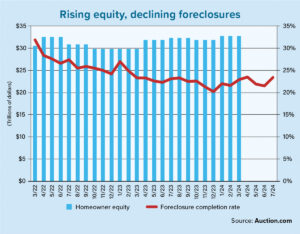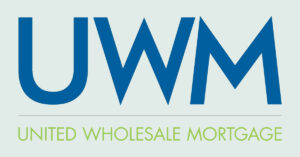The headlines are undeniable. Nonqualified (non-QM) mortgage lending is growing rapidly. In 2019, originations hit $25 billion, according to J.P. Morgan Asset Management, while some experts believe volumes will exceed $100 billion by 2022. As more borrowers enter (or reenter) the non-QM market, investor appetite in the secondary market is growing in lockstep with the growth in originations.
At the same time, it shouldn’t surprise anyone in the mortgage industry that there are still a significant number of holdouts who are reluctant to test the non-QM waters. Many of these lenders and originators remain on the sidelines because they fear they don’t have the expertise to originate and underwrite these types of loans.
What they don’t understand, however, is that today’s non-QM programs and products are quite different than the nonagency products offered in the past. There also is technology that can accelerate the learning curve and increase confidence around these loans. What’s at stake is increased loan volume and revenue, as well as expanded product choices for your borrowers.
Today’s non-QM offerings are particularly well-tailored to the changing needs of the prospective and current homebuyer population. They include bank-statement loans for self-employed workers and entrepreneurial types, asset-based loans for single-family rental investors, financing for foreign nationals and asset-depletion options for retirees.
Unfortunately, there continues to be misconceptions about non-QM loans and their relationship to the subprime products and practices that contributed to the Great Recession. It’s important to separate fact from fiction if you are looking to originate these types of mortgages.
Safer loan parameters
Many of us remember the subprime lending era before the Great Recession. This included low-documentation and no-documentation loans, 100% loan-to-value (LTV) ratios, Wall Street’s voracious appetite for the product and the booming private-label securitization market. Back then, it was widely believed that home prices would always rise, so the accompanying LTVs would eventually mature into safer, higher-quality loans. History shows us how that assumption ended.
In contrast to the subprime loans of the past, the vast majority of today’s non-QM loans are in the LTV range of 70% to 80%, with borrower credit scores above 700 and average debt-to-income (DTI) ratios of about 43%. So, these products are less risky. Corners are not being cut when it comes to verifying income or collateral value, or when determining the ability to repay.
The non-QM lending industry also has learned from past mistakes and is now relying on technology to provide consistency and transparency in credit decisionmaking, accuracy in due diligence, and compliance testing and auditing. These systems are enabling lenders, investors and originators to make better decisions about the right product fit based on curated data and risk modeling, along with implementing true risk-based pricing.
Faster qualification process
Originators and underwriters are accustomed to using agency-based automated underwriting systems (AUS) from Fannie Mae and Freddie Mac (known as Desktop Underwriter and Loan Product Advisor, respectively) for their conventional business. Many mortgage professionals mistakenly assume that non-QM lending includes manual decisionmaking and underwriting that equates to a slow, tedious origination process.
This simply isn’t the case as a new generation of nonagency investors have been quick to understand the value of technology, while many non-QM financing leaders have rolled out eligibility and AUS platforms for their brokers and correspondents. Today’s non-QM lenders, including banks and credit unions, are using automated underwriting and receiving eligibility decisions in seconds. This has streamlined the origination and underwriting of non-QM loans to the point that they essentially replicate the agency mortgage lending process.
One of the biggest fears for mortgage originators is that they will start an application for a nontraditional borrower, such as someone without a W-2 form, then spend a lot of time trying to determine eligibility and meet conditions only to see the loan request declined. When that happens, not only has time, money and effort been wasted, but a client relationship often gets permanently damaged.
Non-QM AUS is designed to address these concerns. Leading industry platforms analyze application and credit data, then compare them to available program and product guidelines to instantly deliver detailed findings about the borrower’s eligibility. So, an originator will know quickly whether a borrower qualifies for a loan or if there are issues preventing their client from qualifying for a specific program.
Less paper chasing
It is true that as non-QM loans gain traction, causing more aggregators and investors to enter this space, the number of new programs — and the accompanying changes to their guidelines — are proliferating. Technology, however, is taking the guesswork and risk out of the process for originators.
No longer do originators have to thumb through hundreds of pages of guidelines to determine which programs fit their borrowers. Instead, they can enter a limited amount of data or upload a loan file, allowing them to quickly find any available mortgage programs. In the case of bank-statement mortgages, new technology will soon accelerate the sourcing of bank statements by directly connecting to the prospective borrower’s financial institution. Similar to how advanced point-of-sale systems work for direct consumer lending, these technologies also are able to calculate the income that can be used to underwrite bank-statement mortgages.
The refinance boom in the second half of last year refocused industry attention on the low-hanging fruit of conventional loans. Although recent interest rate cuts should spur the continuation of this trend, some observers expect refinances to drop off as 2020 progresses, making for a more purchase-oriented market. Having the ability to offer non-QM loan programs can expand business opportunities for originators, giving them new options to solve problems while solidifying relationships and helping them to capture revenue they are currently turning away.
The availability of non-QM AUS technology also means that lenders are no longer confined to agency-backed loans. They don’t have to worry about determining eligibility through a manual process or combing through pages of guidelines when underwriting a loan. Lenders can offer the choices and flexibility of non-QM programs to a new segment of borrowers while feeling confident they will not have to sacrifice efficiency or consistency, or worry about error-prone manual underwriting processes.
● ● ●
This is an exciting development for originators because it means less work, more accurate decisions and more income by closing these loans. Investors who fund these programs are equally excited, since it means more revenue for them due to accurately underwritten loan files that meet their guidelines.
Author
-
Raj Parekh is director of business development at LoanScorecard, a leading provider of non-agency automated underwriting, pricing, bank-statement analysis and loan-loss reserve solutions, which are designed to meet today’s regulatory challenges and capitalize on market opportunities. A mortgage-technology expert with more than 20 years’ experience, Parekh previously held executive positions at Insellerate, LeadPoint, ActiveProspect and LeadROI. He can be reached at raj_parekh@loanscorecard.com.




